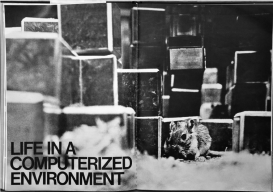In 1943, in the midst of the war, the famous architect Richard Neutra was commissioned by the government of Puerto Rico to build hospitals and schools. In response, he produced a number of prototypes and processes investigating different ways to ventilate and climate control buildings in the sub-tropical environment of the island. Neutra famously labeled his work in Puerto Rico a “Planetary Test.”
Within this context, of both growing globalization and modernist architectural ideals of international style, this conception of a “planetary test” is, therefore, not insignificant. I want to take seriously what this means historically for architects to understand human habitation, and even entire cities and countries as “test-beds” and experimental sites for the future of human life and habitation. Neutra, as architectural historian Daniel Barber notes, signals a moment when the question of “International” becomes “Planetary” on the very site of designing habitation, environment, and climates. Climate control it appears becomes Planetary control, and design will manage the futures of both geophysical forces and geopolitics, through “tests,” perhaps what we also label prototypes, versions, and demos in our present.
This project will trace the intersecting histories between computation, ecology, finance, and design that have made our planet into a technical “test-bed,” and envision the futures of human habitation and life as an experiment in computational techniques.

